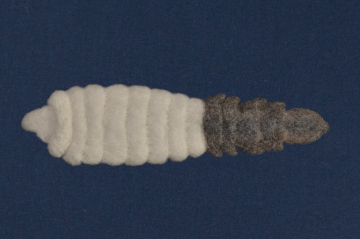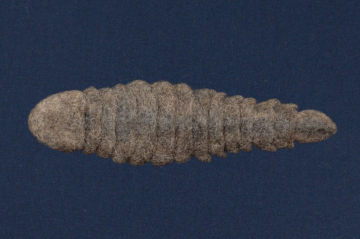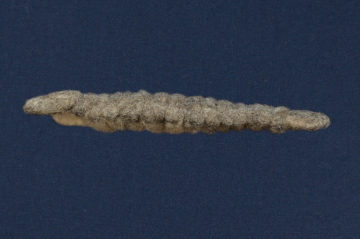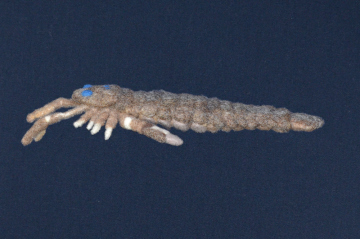How was Pterygotus created?
1, make a drawing
2, make a base of the body
Make a basic structure. Shape the boundaries of each segment clearly so that it can be seen as a segmentation. Carapace (head shield) is attached laler. And also, appedages are made separately.
From the left: dorsal, ventral. In both cases, the left side is the head.
From the left: dorsal, ventral. In both cases, the left side is the head.
3, add color -1-
Make the body while adding color. To define the segment boundaries, start stabbing the colored wool from the posterior segment.
From the left: dorsal, ventral. In both cases, the left side is the head.
From the left: dorsal, ventral. In both cases, the left side is the head.
4, add color -2-
Different colors are used on the dorsal (tergite) and ventral (sternate) sides, with black on the dorsal median. At this stage, the crapace is attached.
From the left: dorsal, ventral, and left lateral. In each cases, the left side is the head.
From the left: dorsal, ventral, and left lateral. In each cases, the left side is the head.
5, make eyes and operculum
Make eyes on the dorsal surface of the carapae. Blue coloration is used in this case. The eyes are a pair of large oval compound eyes and a pair of small ocelli. Make operculums on the ventral side.
Left one is dorsal, right one is ventral.
Left one is dorsal, right one is ventral.
6, make appendages
The most difficult work is making appendages. The number of podomeres has not been reconstructed. From above, cheliceras (one pair), walking legs (four pairs), swimming legs (one pair). The podomere of chelicera is thin and the policy is to use no "bones" for support, resulting in a rather "flaccid" chelicera.
7, done!
‘Pterygotus’ is completed when the gnathobase (the coxa of the swimming leg), the genital operculum, the genital appendage, and the metastome are attached to the body.
From the left: dorsal, ventral, and left lateral. In each cases, the left side is the head.
From the left: dorsal, ventral, and left lateral. In each cases, the left side is the head.














